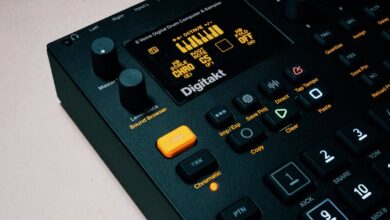Vacumetros: A Beginner’s Guidevacumetros

Vacumetros are crucial instruments utilized in numerous industries, providing precise measurements and ensuring optimal performance. Understanding their significance and functionality is vital for professionals across various sectors. In this comprehensive guide, we delve deep into vacumetros, exploring their intricacies, applications, and maintenance tips.
Exploring the Basics of Vacumetros
Vacumetros play a pivotal role in measuring vacuum levels accurately. These instruments are indispensable in industries such as automotive, aerospace, and manufacturing.
Understanding How Vacumetros Work
Vacumetros operate on the principle of measuring pressure differentials to determine vacuum levels. They consist of a gauge, typically a manometer or digital display, connected to a probe that senses the pressure within the vacuum.
The Evolution of Vacumetros
Over the years, vacumetros have evolved significantly, with advancements in technology enhancing their accuracy and efficiency. Modern vacumetros boast sophisticated features and capabilities, making them indispensable tools in various applications.
Applications of Vacumetros in Different Industries
Vacumetros find extensive use across diverse industries, including HVAC systems, pharmaceutical manufacturing, and semiconductor fabrication. Their versatility makes them invaluable for ensuring quality control and operational efficiency.
Tips for Choosing the Right Vacumetros
Selecting the appropriate vacumetros depends on several factors, including the desired vacuum range, accuracy requirements, and environmental conditions. It’s essential to assess your specific needs before investing in a vacumetros to ensure optimal performance.
Best Practices for Calibrating Vacumetros
Regular calibration is essential to maintain the accuracy and reliability of vacumetros. Follow manufacturer guidelines and industry standards to calibrate your vacumetros regularly, ensuring precise measurements.
Common Maintenance Challenges and Solutions
Like any precision instrument, vacumetros require proper maintenance to ensure longevity and consistent performance. Regular cleaning, inspection, and calibration are essential to address common issues such as sensor drift and contamination.
Maximizing Efficiency with Vacumetros
Incorporating vacumetros into your workflow can streamline processes, improve product quality, and reduce downtime. Explore innovative ways to integrate vacumetros into your operations for maximum efficiency.
Future Trends in Vacumetros Technology
The future of vacumetros holds exciting possibilities, with ongoing research and development focusing on enhancing accuracy, miniaturization, and connectivity. Stay informed about the latest advancements to leverage the full potential of vacumetros in your industry.
Conclusion
vacumetros are indispensable tools for professionals across various industries, offering precise measurements and ensuring optimal performance. By mastering the fundamentals of vacumetros and implementing best practices, you can harness their full potential to drive success in your endeavors.
FAQs
- How do vacumetros contribute to quality control in manufacturing processes?
- Can vacumetros be used in hazardous environments?
- What are the key differences between analog and digital vacumetros?
- How often should vacumetros be calibrated?
- Are vacumetros suitable for measuring vacuum levels in space exploration?
- Can vacumetros detect leaks in vacuum systems?



